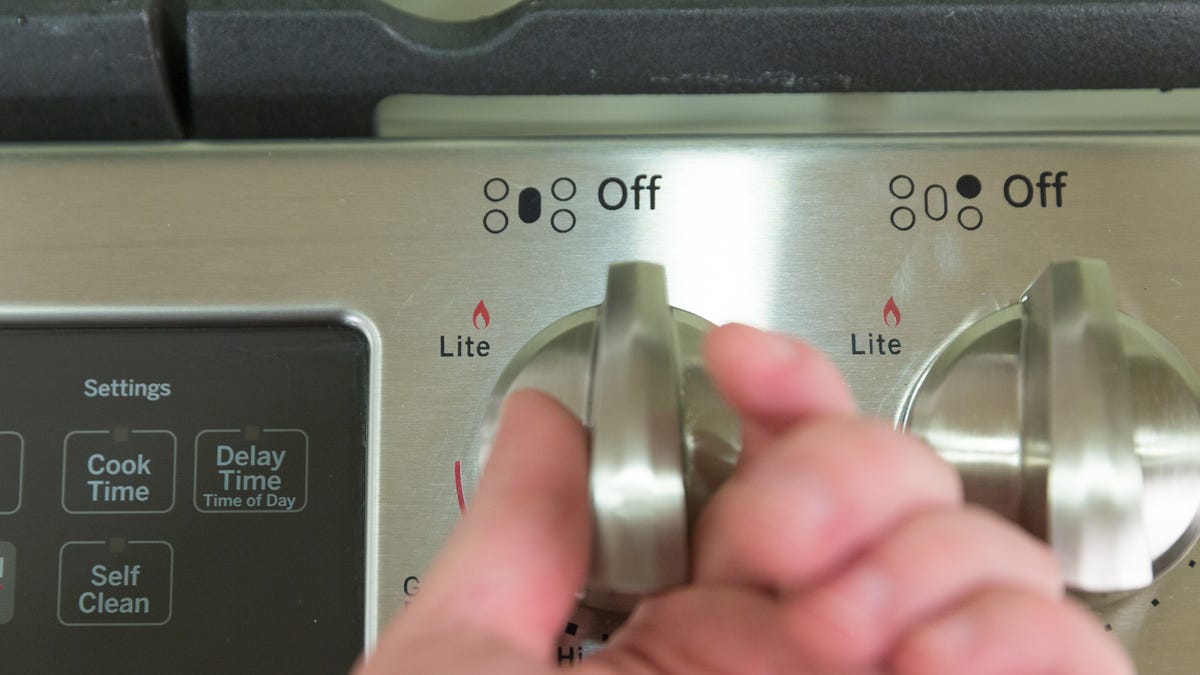 Why You Can Trust CNET
Why You Can Trust CNET Gas stove won't light? Here's how to fix it
Ditch the matches and fix your gas stove for good.

Gas ranges come with a handful of advantages.
If you have a gas stove, then you certainly know how convenient it can be. Gas ranges come with a handful of advantages: nearly instant heat, long-term cost savings and, of course, the ability to continue cooking even when the power goes out.
But unlike with coil-element or electric stoves, you have to ignite the burners to be able to cook anything on a gas stove. And sometimes, they just simply won't light no matter how much you twist and turn the knobs.
Fortunately, the problem is usually something you can resolve yourself. Learn about the common reasons why your gas stove won't ignite and how to fix it.
Problem: It's clogged with food debris
Whether it's grease buildup or food crumbs, one of the most common causes for a gas burner that has trouble igniting is debris blocking gas flow to the igniter.
The fix: Begin by removing the grate covering the troubled burner. Next, remove the burner cap, which should lift off with ease. The sealed burner base will either lift off or you may need to remove a couple screws before removing it. Clean the surrounding area with a warm, soapy wash cloth. Soak the sealed burner base in vinegar or warm water and use a stiff brush to remove any debris. Finally, clean any remaining debris out of the burner holes with a toothpick, sewing needle or compressed air. Reinstall the burner, cover and the grill, and try igniting the burner once more.
If this doesn't work, there could be a kink in the gas supply line or a larger issue, and you may want to consult a professional.
Problem: There's a loose connection
While there aren't a ton of moving parts on a stovetop, it is possible for connections to come loose, particularly during cleaning or installation. If the wires which connect the igniter to the control module aren't making a solid connection, you won't get the spark needed to properly ignite the burner.
The fix: First, kill power to the appliance by unplugging it from the wall or flipping the breaker switch. Remove the grate and burner cap from the problematic burner. Remove the sealed burner base and look for loose connections or disconnected wires. Secure any loose connections and reconnect any disconnected wires, reinstall the burner base, cap and grate. Restore power to the stove and test the connection.
Problem: It's a faulty igniter
If you have removed debris from the burner base and secured any loose connections, you may be dealing with a faulty igniter. A quick way to tell if the igniter needs to be replaced is by switching the lights in the room off and turning the control knob to the ignite position. If the igniter sparks yellow or orange instead of a bright bluish-white, you will likely need to replace the igniter.
The fix: Cut the gas and power to the stove, remove the burner cap and use a screwdriver or hex driver to disconnect the burner base. Disconnect the wires coming from the igniter. Usually, igniters use a quick disconnect system so you won't need to cut or splice wires. Use the model number of your stove to determine which replacement igniter you should purchase, install the new part, and replace the burner base, cap and grate. Restore gas and power to the stove and test the burner.
If none of these quick fixes remedy a stubborn burner, you may need to replace the igniter switch, igniter control module or contact a professional for a more in-depth diagnosis.
More kitchen fixes and tricks
- Clogged sink? Here are 3 DIY fixes that don't require chemicals
- 7 clever ways to use your kitchen tongs other than flipping food
- 8 foods you just shouldn't make in your slow cooker
- 3 common oven problems and how to fix them yourself
- How to silence your microwave permanently in just a few, easy steps
- You can open a bottle with your phone charger. Here are 14 other clever ways to try

